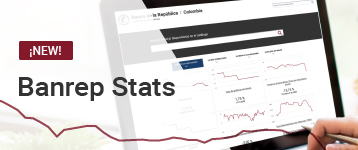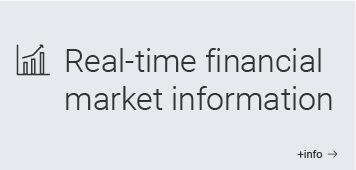PRESS RELEASE: INFLATION REPORT 3Q-2018
| Presentation (Only Available in Spanish) | |
| Inflation Report September 2018 (Only Available in Spanish) | |
| Video (Only Available in Spanish) |
Inflation Developments and Monetary Policy Decisions
In the third quarter of 2018, inflation rose less than expected by analysts and the Central Bank’s technical staff, remaining close to the 3.0% target. Inflation expectations to one and more years increased slightly, ranging between 3.3% and 3.5%. Economic growth in the third quarter is expected to be similar to that recorded in the first half of the year (2.6%), with a greater spare capacity than in 2017.
In September, the annual variation in the consumer price index (CPI) and the average of core inflation indicators stood at 3.23% and 3.28%, respectively, relatively similar figures to those recorded in June (3.20% and 3.33%) (Graph A). Food and regulated goods and services were the groups that pushed inflation upwards, while tradable and non- tradable inflation excluding food and regulated items had a better performance than the average. Inflation expectations increased slightly, remaining somewhat above the target. Analysts’ expectations point toward a 3.3% inflation rate in December 2018 and in 2019. Those extracted from public debt bonds to two, three, and five years stand around 3.5%.
The performance of inflation and inflation expectations in the third quarter took place in a context of negative output gap, with a somewhat more dynamic domestic demand than the one recorded in the first half of the year. The indicators of retail sales, vehicle licenses, consumption credit, and imports of consumer goods suggest that household spending would have continued to recover. On the other hand, imports of machinery and equipment in constant pesos would have accelerated slightly.
With the above, the Central Bank’s technical staff estimates that economic growth in the third quarter (seasonally and calendar adjusted) would be around 2.6%. This estimate assumes that the growth in public consumption would continue to moderate. Also, that investment in civil works will fall less than in the first half of the year, with a similar performance (also negative) for buildings. Net exports would have subtracted to growth, with a greater expansion in imports than exports. The dynamics of absorption would have taken place in an environment of recovery of the terms of trade and with a current account deficit that would have widened in US dollars and as a share of GDP. The latter suggests that the correction of the external imbalance would have been slower than had been forecast.
As for credit, in September, total indebtedness (portfolio in domestic and foreign currency, bonds, and external direct credit) continued to decelerate, with a real annual growth rate of 2.5% for total credit, and -0.6% for commercial credit. The dynamics of household debt has stabilized around 6.0%. Real interest rates—policy, commercial, mortgage, and consumer credit (except credit cards)—stand at levels below the averages of the past ten years.
For the remainder of the year, the new figures and forecasts of economic activity of the country’s trading partners suggest that external demand will continue to increase, but at a somewhat slower rate than forecast one quarter ago. The futures market at a six and twelve-month horizon suggests that the price of oil will decrease, but would remain at levels still higher than those registered a year ago. Should this materialize, the terms of trade and the dynamics expected from the country’s trading partners could boost external revenues.
Several factors could put pressure on the exchange rate in the coming months. The Fed will continue to increase its interest rates, and high volatility around the globe could increase the risk premia in emerging countries. A higher-than-expected reversal in international oil prices is not ruled out, and our current account deficit remains above 3.0% of GDP.
With all of the above, the technical staff of the Central Bank revised the growth forecast for this and the following year slightly downward. According to the new estimates, in 2018 and 2019, the increase in output would be 2.6% (before: 2.7%), and 3.5% (before: 3.7%), respectively. These forecasts assume that private consumption and investment will continue to recover, albeit with a slower dynamics than the one observed, on average, since 2005. The calculations also suggest that the excess of installed capacity would reduce in 2019.
The monetary policy actions taken so far and the excess of installed capacity should contribute to the convergence of inflation to 3.0%. However, there are risks that could slow this process down. The devaluation of the exchange rate could be larger than expected, with a high impact on the level of prices of tradable goods; regulatory changes could generate high increases in the prices of public utilities and regulated goods in the first half of 2019; finally, a greater impact on prices due to climatic variations is not ruled out.
Based on this information, in its meetings in September and October, the Board of Directors considered the following factors in its decision:
- The weakness in economic activity and uncertainty regarding its pace of recovery.
- Observed inflation and its expected convergence to the 3.0% target.
- The effects from the changing international financial conditions on the Colombian economy.
In this environment, assessing the situation of the economy and the risk balance, the Board deemed appropriate to maintain the policy interest rate at 4.25% (Graph B).
The Board will continue to carefully monitor the behavior of inflation and the forecasts for economic activity and inflation in the country, as well as the international context. Finally, the Board reiterates that monetary policy will depend on the new information available.
Juan José Echavarría
Governor
Video of the Inflation Report 3Q-2018
This was the presentation of the #InflationReport for the third quarter of 2018, held on Thursday, November 15, by the Governor of Banco de la República, #JuanJoséEchavarría.



















































